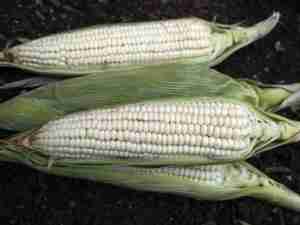But traders fear more disruption in future due to a ban on genetically modified strains yet to be approved by Brussels.
Last summer, more than 200,000 tons of soya beans and meal were refused entry to EU ports, largely in Spain, because they contained small traces of GMO maize varieties then forbidden in Europe.
Maize and soya beans are often shipped in the same containers and on the same ships. Europe may only grow small amounts of soya under the terms of the 1992 Blair House accord and depends on imports. "For the time being there's no problem, for but how many months? We cannot know if when the next harvest comes we will have the same problems over rejected shipments," said a spokesman for Spanish grain importers' group Aecec.
EU Commission officials say they are working on a short-term technical solution, which trade sources say may be to tolerate up to 0.1 percent of unauthorised GMO strains in imports, although buyers want a threshhold of 0.5 percent.
Traders said the cost of animal feed could rise if shipments were blocked from North or South America, because soya has a high protein content and cannot easily be replaced.
"Every year we see more incorporation (of rapemeal) in animal feeds, but to be honest there is no real alternative to soya," a Belgian trader said.
South American Crop Expected
Traders noted France, Spain, Italy, Portugal and Greece usually preferred to import soya from South America.
"When the GMO problem arose, the context was particular with poor crops in Argentina and Brazil, leaving buyers with little choice but turn to North America to find beans," a French buyer said.
U.S. soya imports have slowed down in recent months, but dealers said this was due to high prices -- not shipping problems -- which buyers expected would fall after record crops from South America came on to the market.
In the meanwhile, animal feed makers had switched to cheaper sources of protein like rapemeal, sunseeds or synthesised amino acids, in the case of chickens and laying hens.
"Every one has been short on protein, because they were expecting prices to fall. Going long meant buying high, when prices were set to be cheap in April or May," the Spanish Aecec spokesman said.
Soybean meal in Spanish ports has jumped to a high for the 2001/10 market year of 325 euros ($454.4) a ton, shrugging off a slump in other feed-grains.
Soya farmers in the world's second-largest producer Brazil expect a record 67.2 million tonne crop, while a record 54.5 million tonnes are forecast in number-three grower Argentina.
Neighbouring Paraguay is also expected to recover from a poor harvest last year to post a record soya crop, of 7.4 million tonn. (Reuters)








